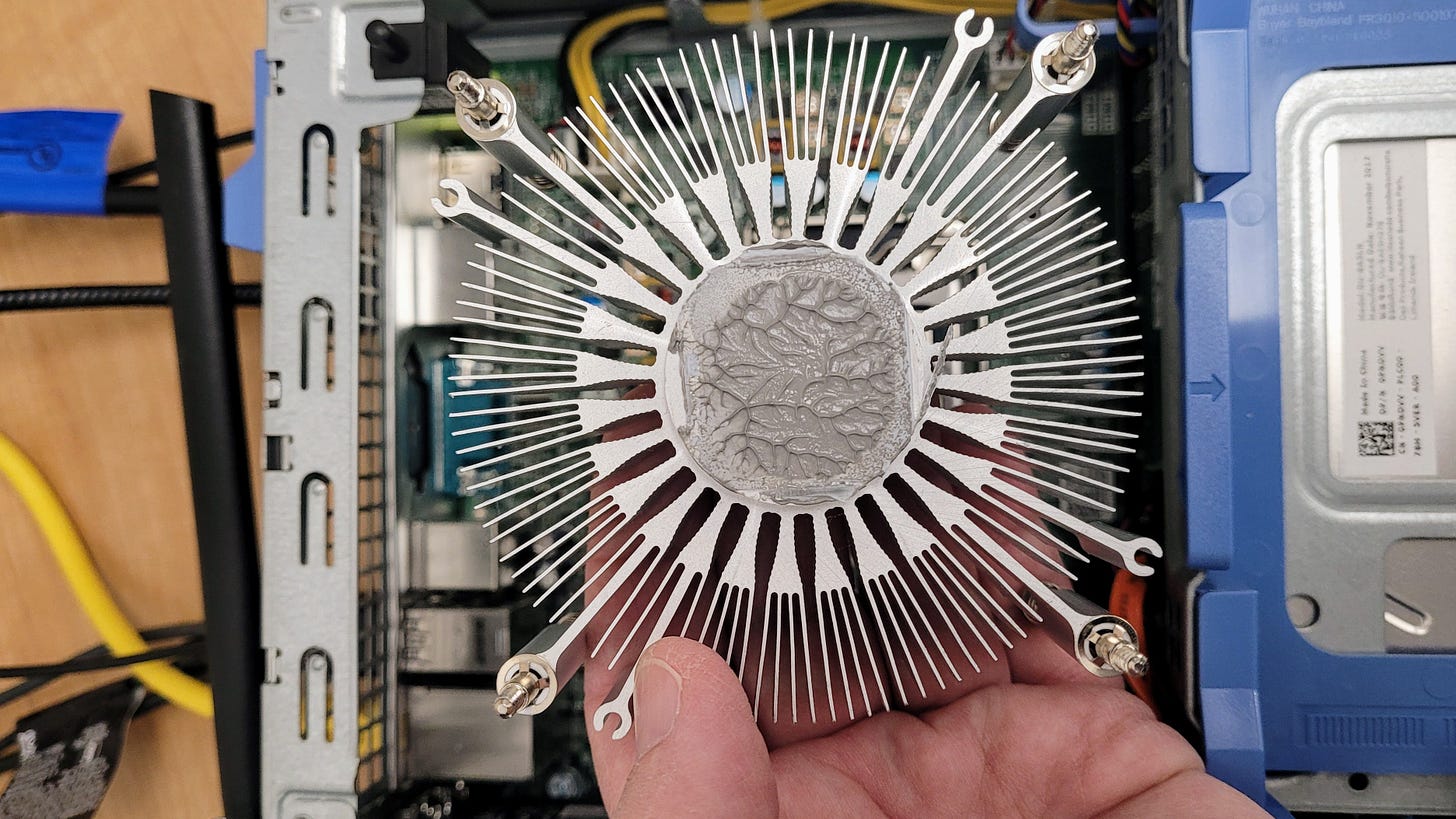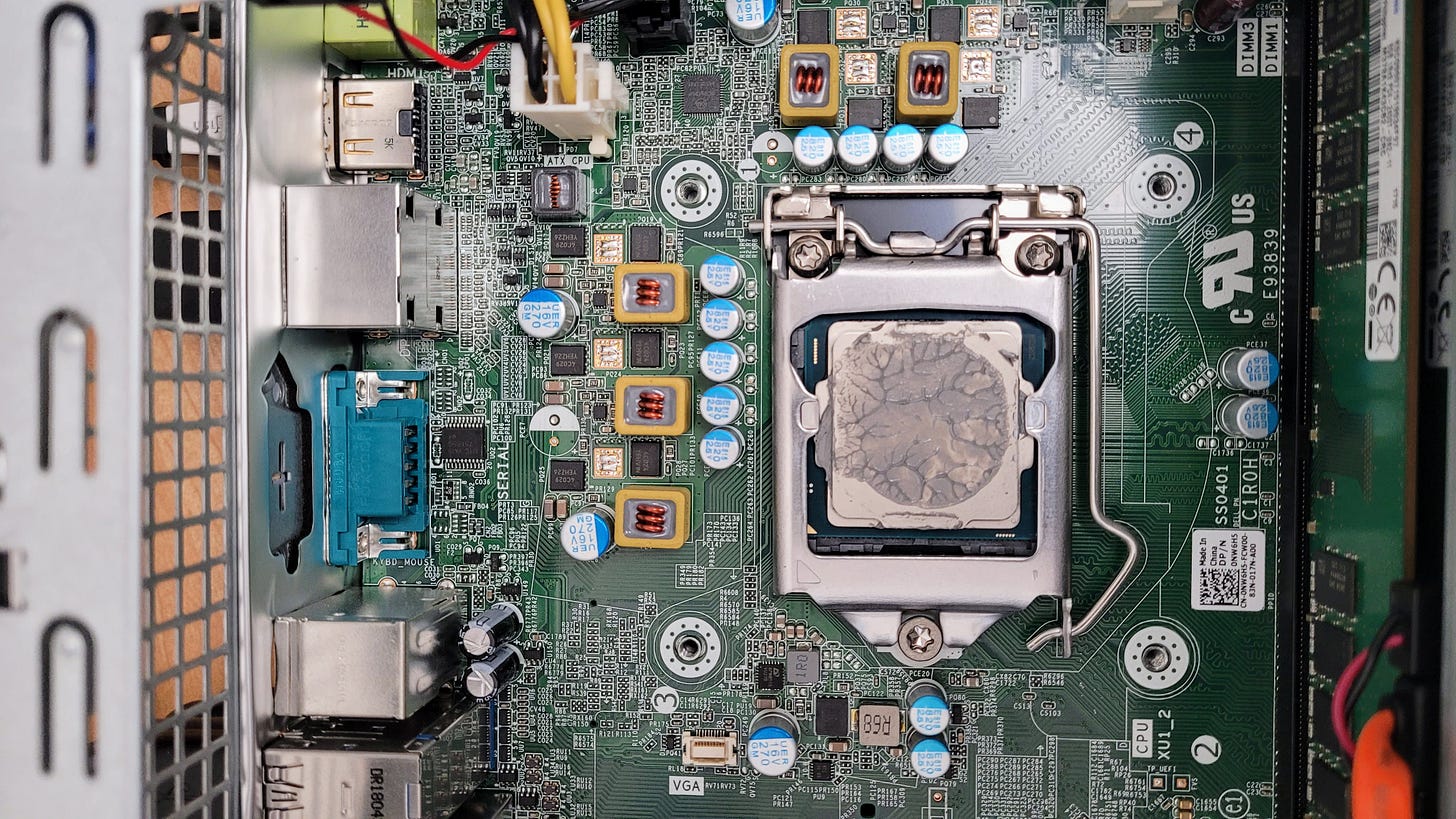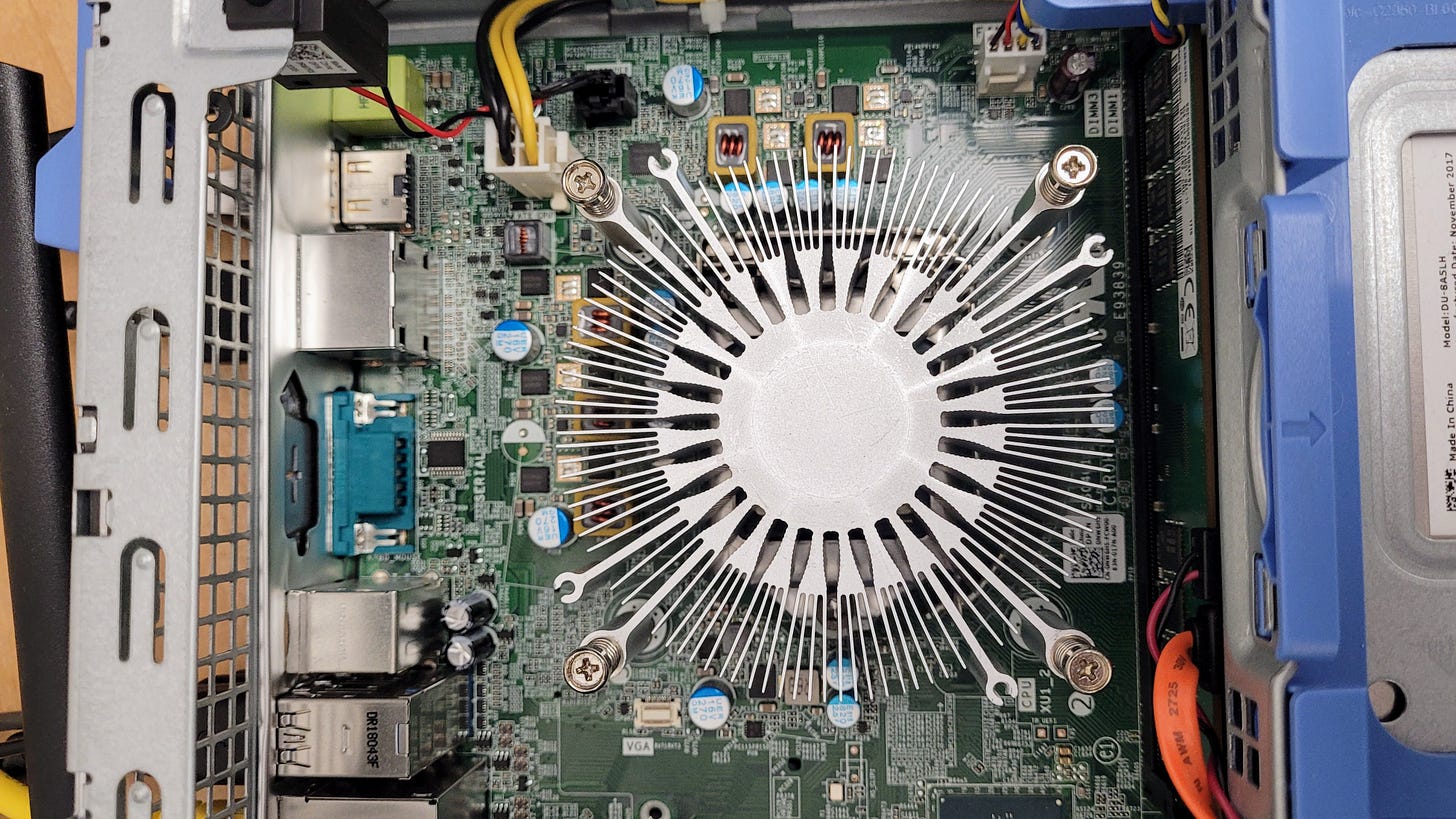First Time Using Thermal Paste
In all the years I've monkeyed with computers and servers, I've never applied thermal paste...until now.
I’m pretty sure I put too much thermal paste on my desktop computer’s processor, but the temperature has gone down and the fan hasn’t kicked in like it was doing.
Let me backtrack a bit. My Dell OptiPlex 7050 SFF (small form factor) computer was overheating, where overheating means that when the CPU was under heavy load, the fan would kick in at 100% speed. Very noisy. Rather disruptive in the middle of a Zoom conference.
A bit of searching on the internet revealed two themes: “I need to add another fan to my Opti 7050” and “your thermal paste is worn out.” I opted to replace the thermal paste and see if that made a difference.
Thermal paste and cleaning kit
I bought thermal paste and a cleaning kit. In hindsight, some coffee filters and alcohol would have been just as good as the cleaning kit. The thermal paste was ARCTIC MX-4 for $6.99:
The cleaning kit was $9.99:
OwlTree Thermal Paste Remover Kits for CPU, GPU, Heatsink etc (20 Pieces Wipes)
As soon as I opened one of the remover packets, I recognized the odor and realized I could have used a high-quality paper towel or some coffee filters with some alcohol to do the same thing as the pads.
Cleaning
I used three pads to get the old thermal paste off of the bottom of the fan and off the CPU. I used a fourth pad to really make sure I got them clean, but they were already clean enough that I didn’t really need that fourth pad.
Here is the old paste on the bottom of the fan:
And here is the old paste on the CPU:
After removing the old thermal paste, the CPU was revealed:
Spreading thermal paste
The photos below show a lot of thermal paste. Honestly, I used a dollop about the size of a small garden pea. In the photos, the thickness looks much greater than it did in the moment. Nevertheless, it looks like a lot.
Here’s a close up:
The base of the fan is a round shape that doesn’t extend to the edges of the CPU.
Did it work?
I tested the efficacy of the new thermal paste by opening nearly two dozen applications, including a live television stream, a Zoom video conference, my Outlook mail client, and three different web browsers. Before replacing the thermal paste, the CPU temperature would have spiked with this kind of load and the fan would have kicked in. With the new thermal paste, the temperature bumped up from about 50° C at idle (light load) to about 60° C (heavy load) as shown in HWMonitor below as temperatures for Cores 0, 1, 2, and 3. (At idle, the CPU runs between 39° C and 45° C, averaging about 42° C.)
Was it too much paste?
I’m sure I used too much paste, even though the amount I put on was what others had recommended. When I spread it out, it looks like frosting on a cake. It really isn’t very thick, but experienced builders are likely shaking their heads and getting ready to tell me I should take it apart, clean it, and do it over. And yet, the machine is operating around the clock without the temperature spikes I was seeing before.
Let me know your advice. I’ve not fiddled with thermal paste before, and I’m sure the common error is using too much. I’d appreciate the benefit of experience here, so please do feel free to weigh in.
Removing the fan
For those who wish to know, this particular assembly consists of a black plastic fan shroud and the finned CPU cooler. The shroud comes off with three screws:
Those three screws are marked on the fan shround with a triangle and the word “Fan.”
The finned cooler is attached with four spring-loaded screws:
I removed the screws as equally as I could, meaning unscrewing one screw a little bit, then the opposite screw a little bit, then shifting to the other pair. When I reinstalled the fan, I did this the same way, tightening the screws a little bit and trying to do so in an X pattern to bring the cooler down onto the CPU as evenly as possible.
73 to all and remember to touch a radio every day!











